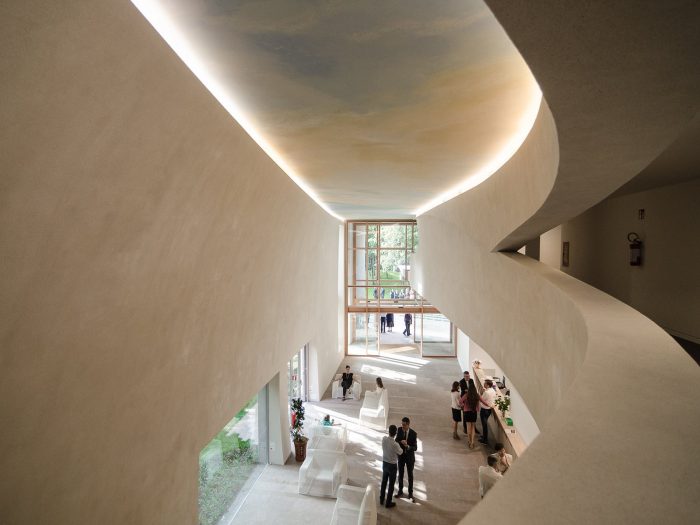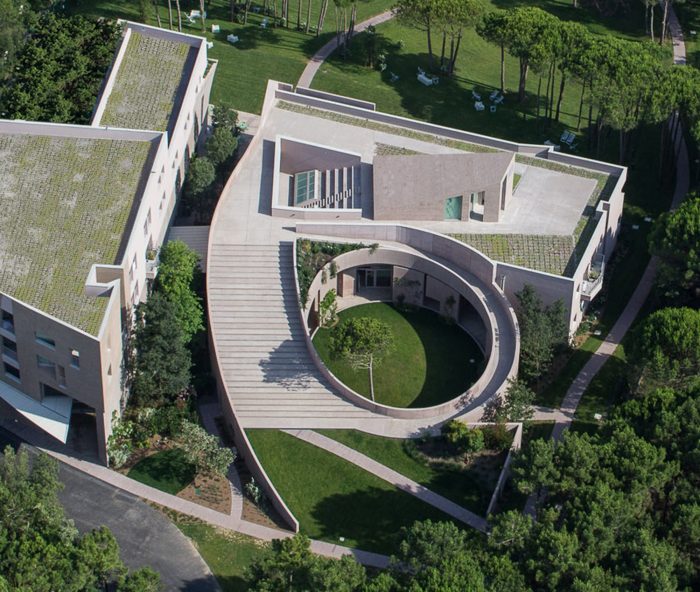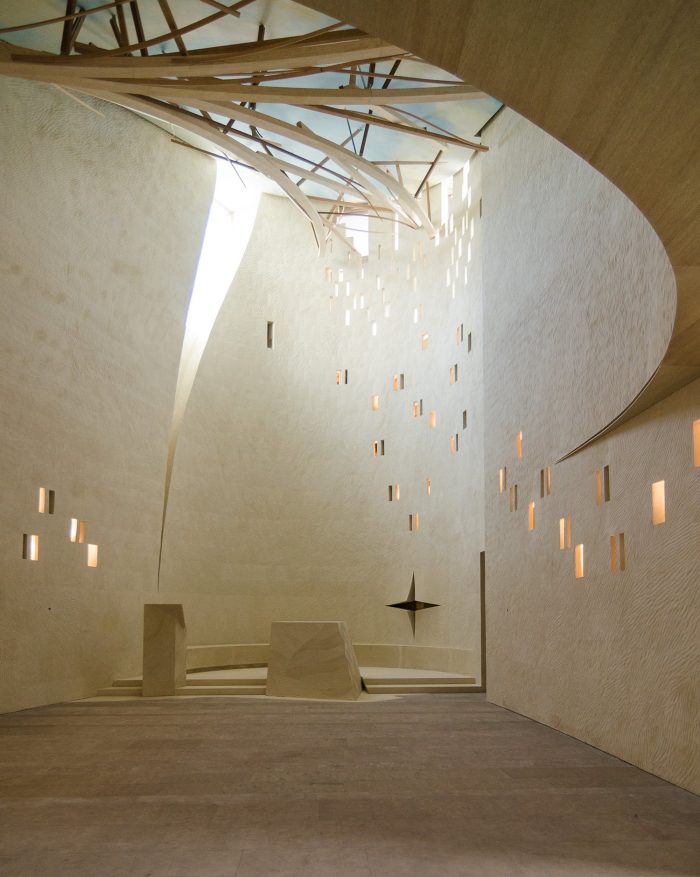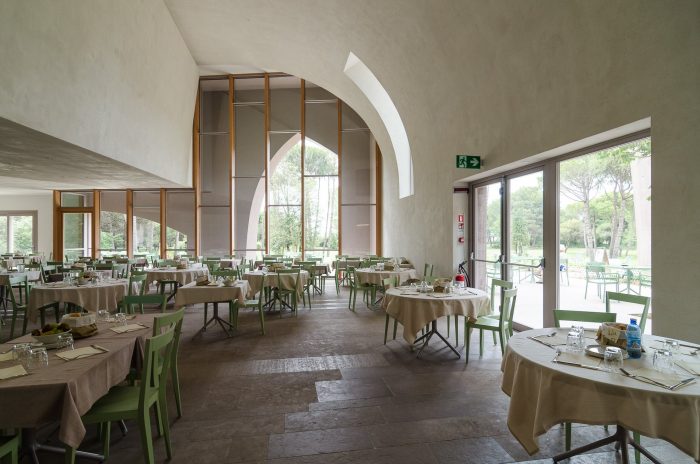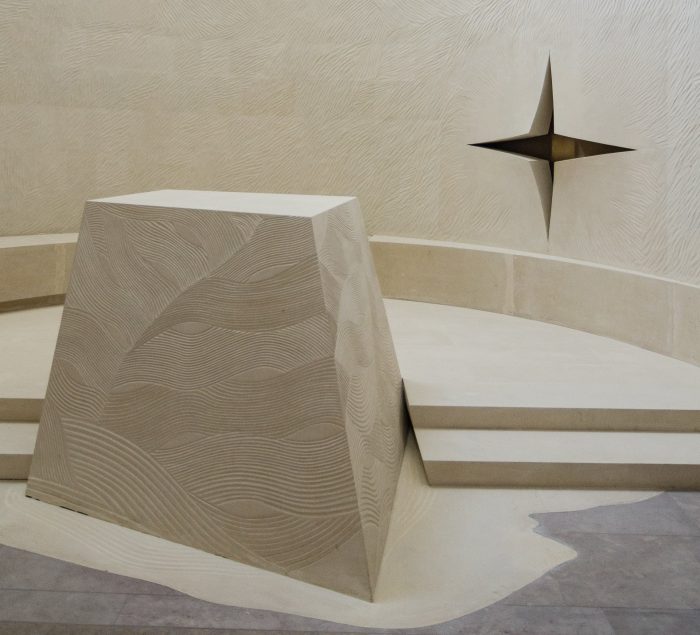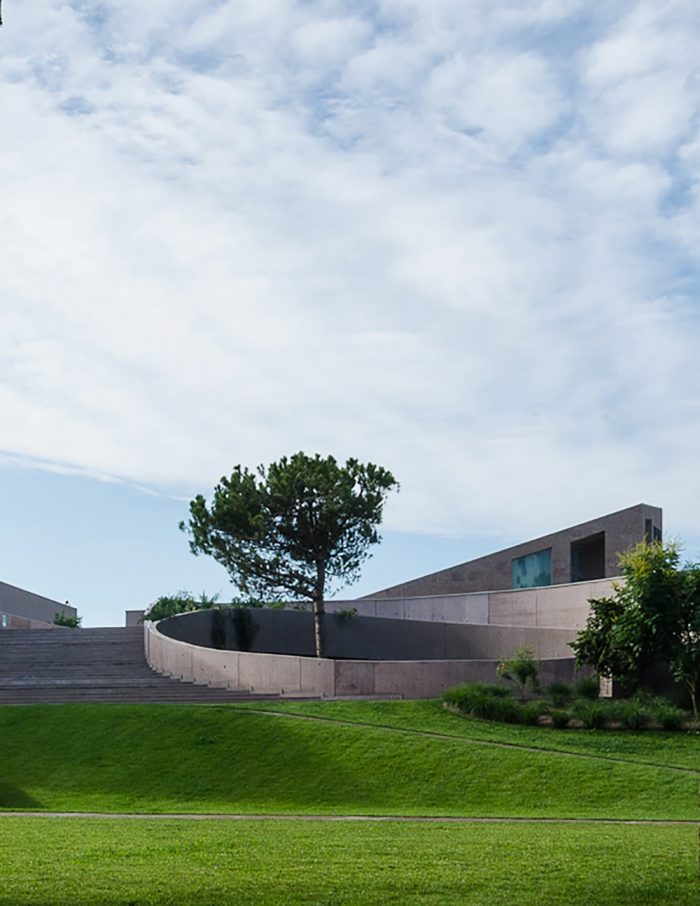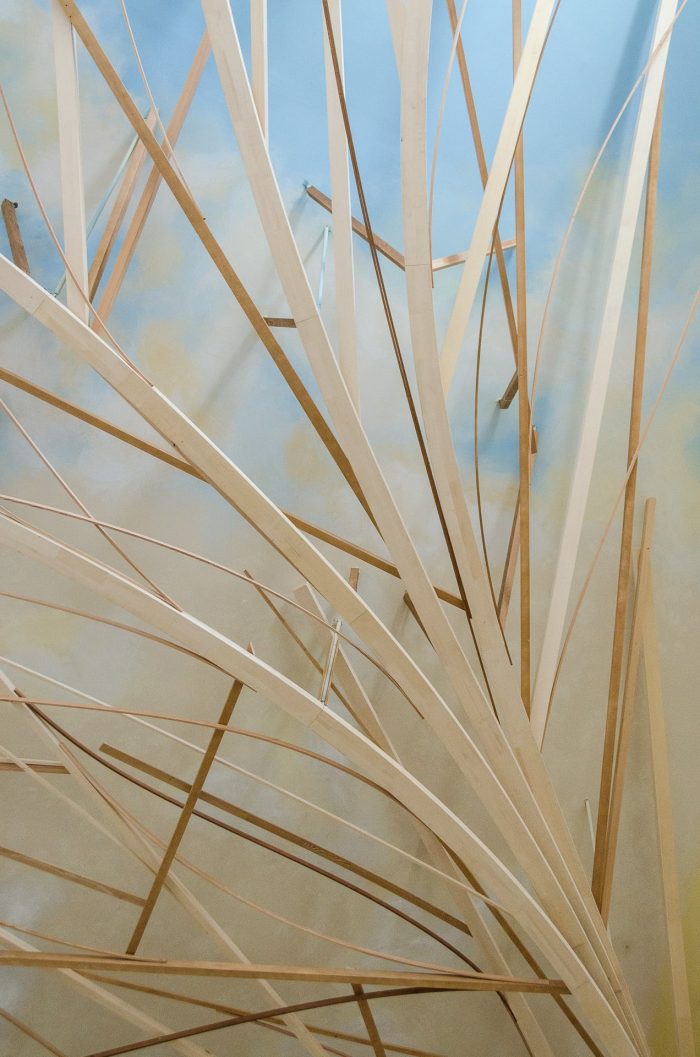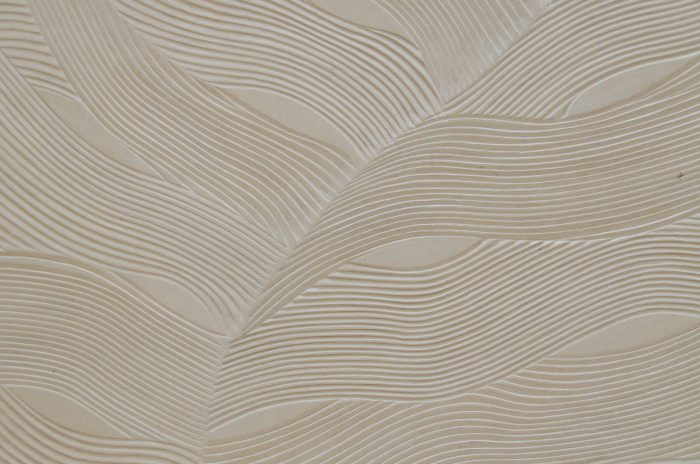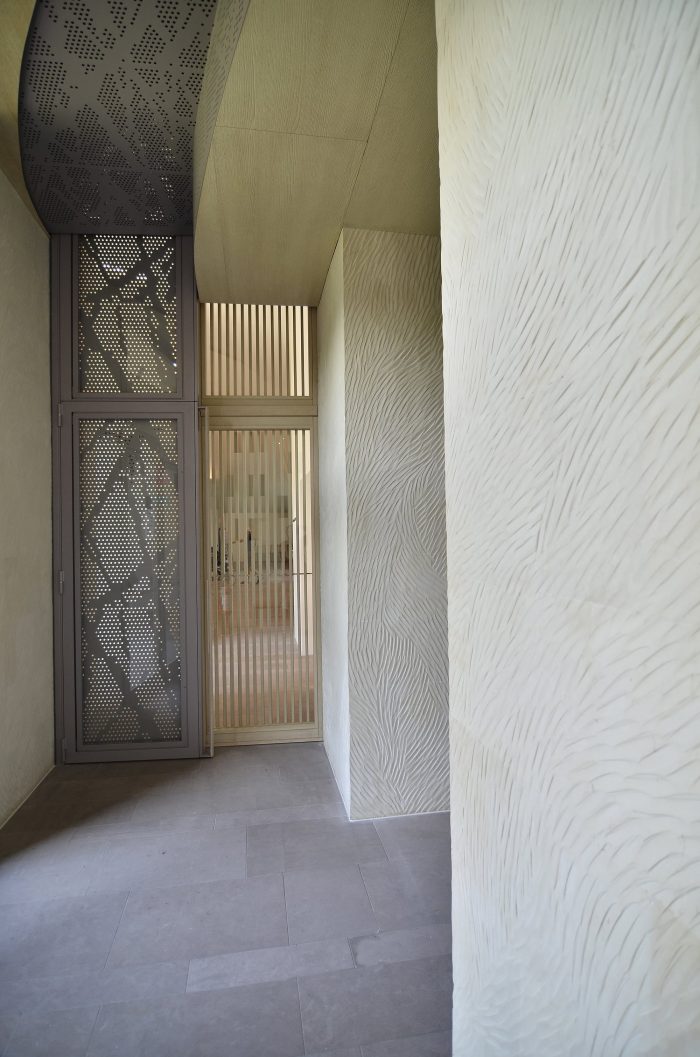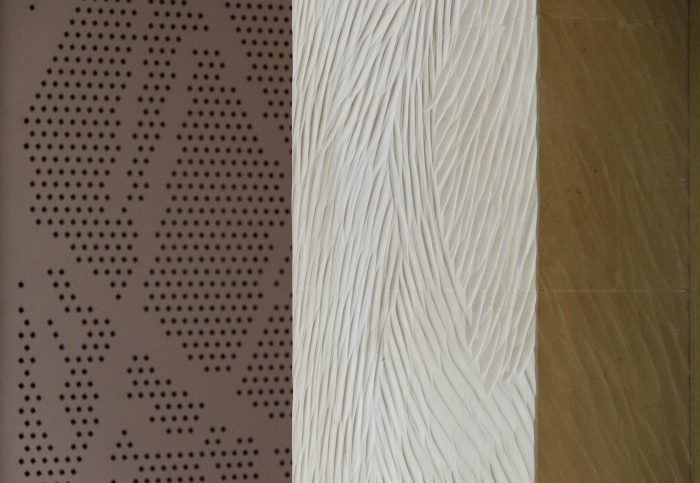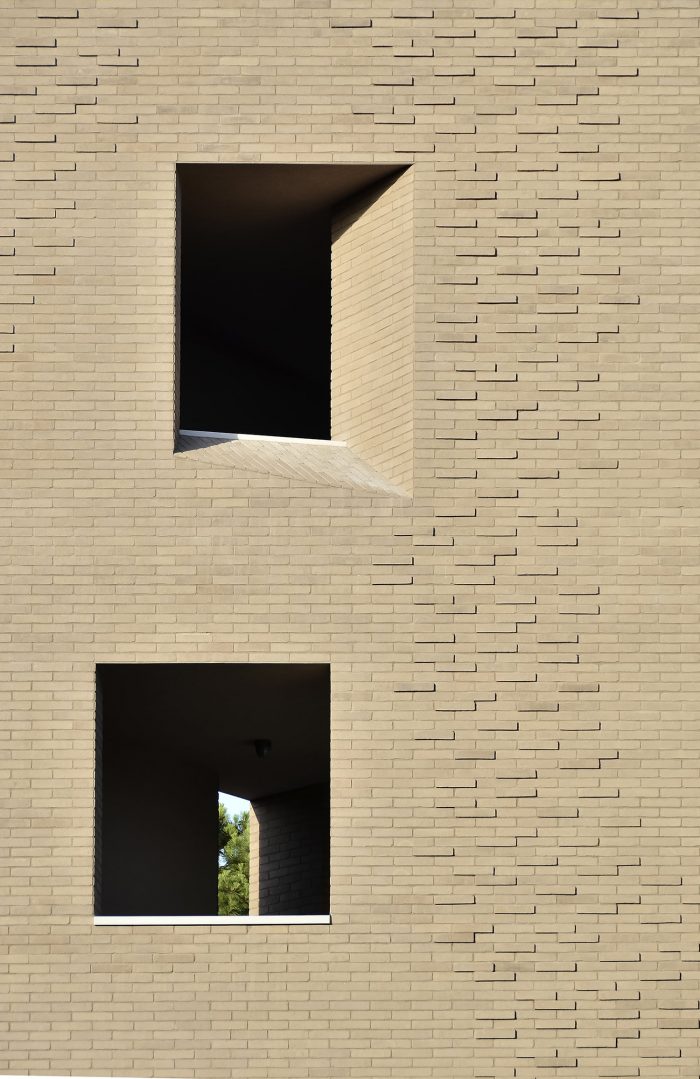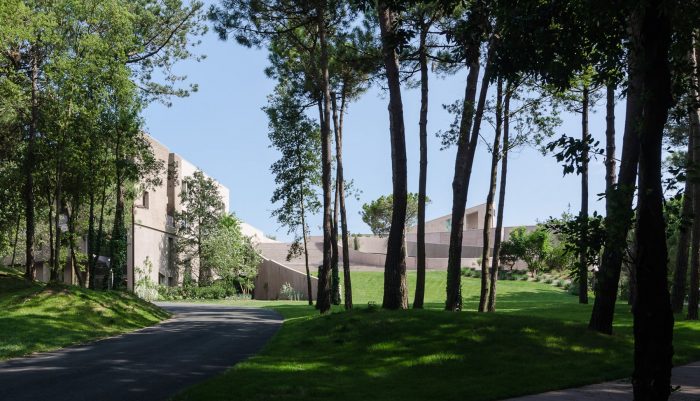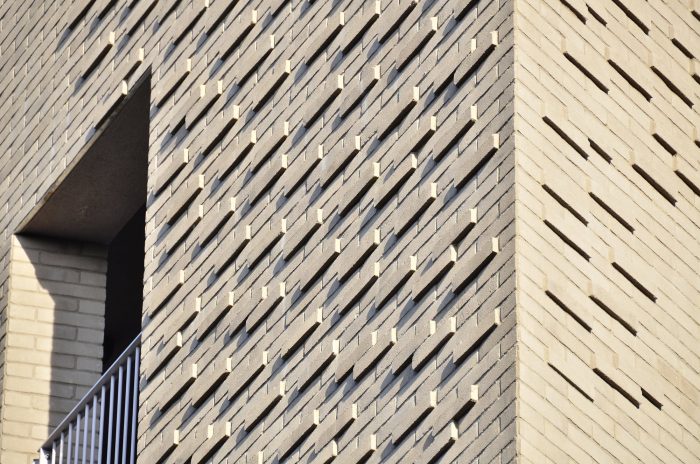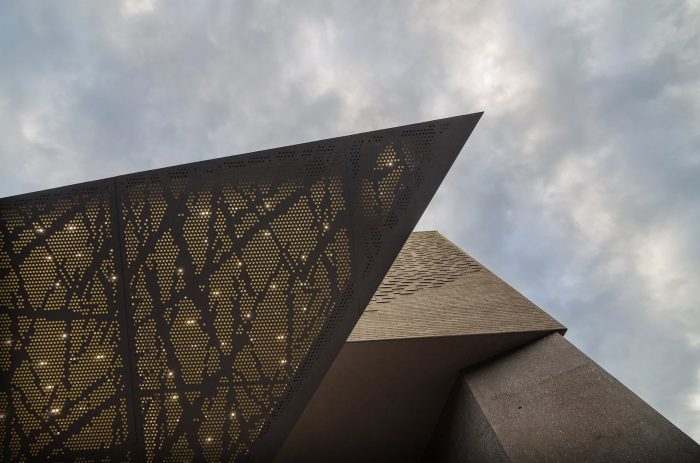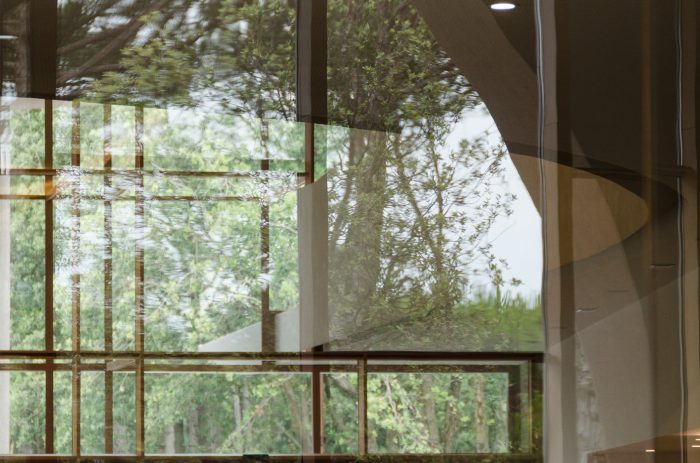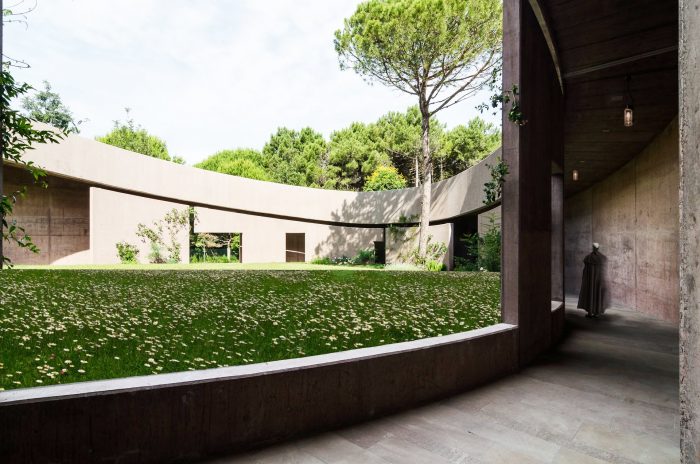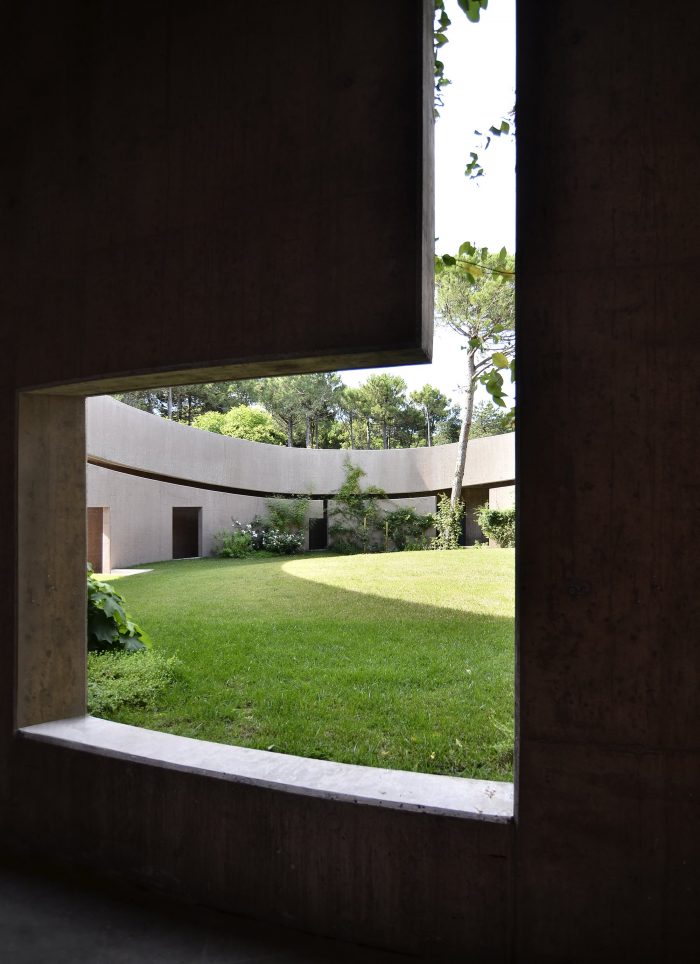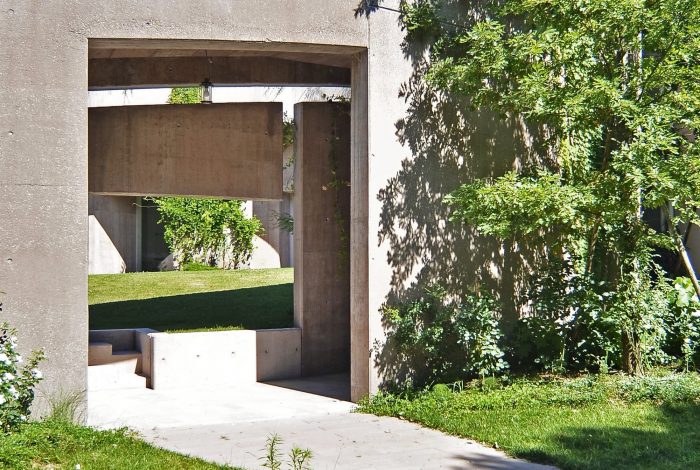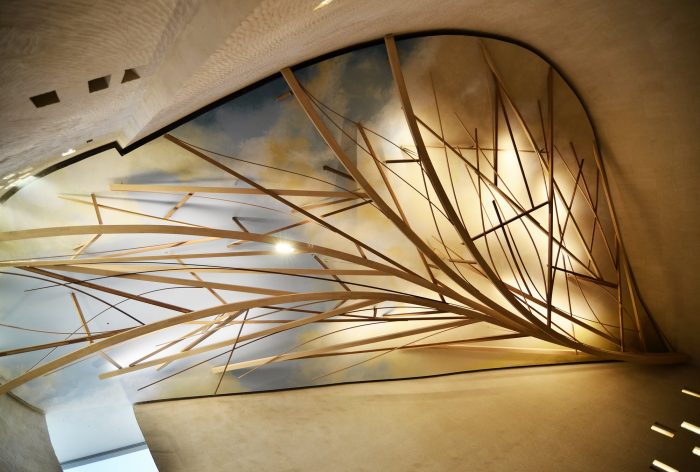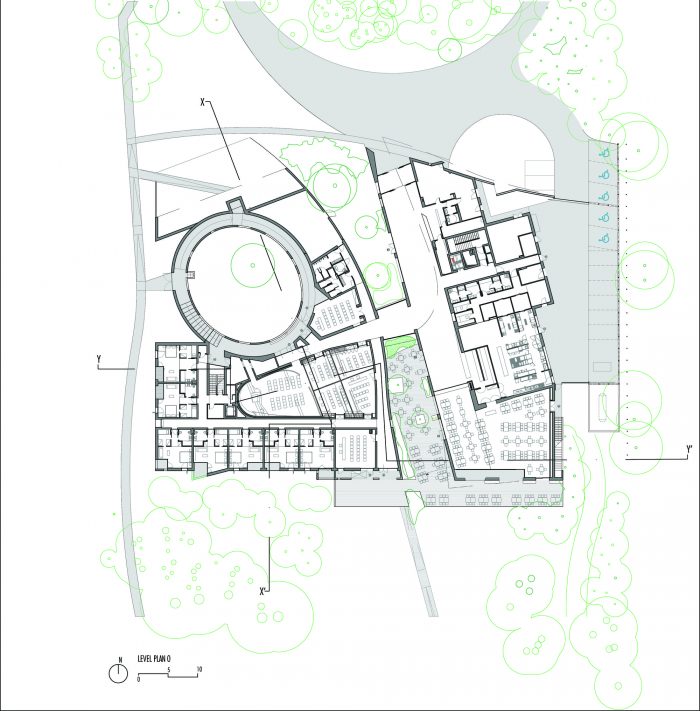斯特拉-马里斯(Stella Maris)是一个超视距干预项目,在一个为残疾客人及其家人设计的住宅区内的小教堂和回廊中创造一个冥想空间,在一个非常美丽的自然环境中,有一片茂密而深的松树林,可以俯瞰亚得里亚海。土地开始慢慢上升,放弃了松树林的黑暗,然后变成一个平台,达到松树树冠的高度,突然露出了大海的浩瀚。一个大的沙丘改变了下面花园的空地,它与建筑空间衔接在一起。从这里开始,它一直在进行挖掘和减法,而攀登时感觉到一种真空的存在,一种突然的暂停,它不能被访问,但它是强烈的存在。围绕这个空间的回廊–一切都围绕着神圣的空间–只有从小教堂才能进入,从外面也几乎感觉不到,这是一个地下室,自然光从一个单一的切口进入,从东方,晨光。它是用石块建成的,其表面经过特殊的铣削加工,使接缝消失,其效果似乎是由巨大的石块挖掘出来的。
Stella Maris is a hypogeal intervention to create a meditative space in the project of a chapel and cloister within a residential complex designed for guests with disabilities and their families in a natural environment of great beauty, there is a thick and deep pine forest overlooking the Adriatic Sea. The land slowly begins to rise abandoning the darkness of the pine forest to then turn into a terrace that reaches the height of the canopy of pines suddenly revealing the sea in all its vastness. A large dune that transforms the clearing of space in the below garden which is articulated the built space. From here, it has been proceeded for excavation and subtraction, while climbing the presence of a vacuum is felt, a sudden suspension, which can not be accessed, but which is strongly present. Around this space the cloister – everything revolves around the sacred space – where it is only possible to access from the chapel, also barely perceptible from the outside, a crypt in which the natural light enters from a single cut, from the east, the morning light. It has been built in blocks of stone whose surface was machined with a particular milling, which makes disappear the joints, with the effect that seems obtained for excavation by an immense mass of stone.
围绕着这个回廊空间,围绕着神圣的空间,它从小教堂进入,从外面也几乎感觉不到,这是一个地下室,自然光从一个单一的切口进入,从东方,晨光。通过小教堂的活动墙,故意限制尺寸,但不限制高度,小教堂本身可以通过纳入会议空间的大厅来扩大:一个冥想的空间,在某些情况下,成为一个有相当容量的礼仪空间。石头成了主角,高高的墙似乎是用一块块的石头挖出来的,因为用一种特殊的技术,取消了所有的石块之间的接缝,同时使表面在光线下充满活力。在树枝交织的背后有一片彩绘的天空,强调了住房墙的向上运动。一个高质量的自然环境的存在,暗示了一种 “植物学 “的设计方法。它不仅要保护松木不受人类过度定居的影响,而且要从其程序化缓解的意义上,把建成的东西理解为时间上可编辑的图像。寻找使用的材料是与项目的第一次阐述一起开始的。松树起皱的树皮,在灯光下不变色,现在是灰色、红色或棕色,是确定必须使用的材料的持续参考。
Around this cloister space, revolves around the sacred space, it is accessed from the chapel, also barely perceptible from the outside, a crypt in which the natural light enters from a single cut, from the east, the morning light. Through the movable walls of the chapel, with deliberately limited size, but not in height, the chapel itself can be expanded by incorporating the halls of a meeting space: a meditative space that, on certain occasions becomes a liturgical space of considerable capacity. The stone becomes the protagonist, the high walls seems to be dug in a single block because worked with a particular technique which cancels at all the joints between the blocks while making the surface vibratile under the light. A painted sky shines behind the interweaving of the branches to emphasize the upward movement of the housing wall. The presence of a natural environment of great quality has suggested a “botanical” design approach. It not only had to preserve the pinewood from excessive human settlement, but also understanding the built as an editable image in time in the sense of its programmed mitigation. The search for materials to be used started together with the first elaboration of the project. The wrinkled bark of pine trees with his non-color-changing color under the light, now gray or red or brown, was the constant reference in identifying the materials that had to be used.
内部和外部的地板,以及一些外部包层,都选择了一种石头,Santafiora石头,不仅因为它的颜色,而且还因为它可以实现广泛的表面处理。其结果是,单一颜色的各种色调,大大降低了建筑与周围环境的协调程度。结束的设计经验,特别是代表了对如何在实现的所有阶段保障建筑质量这一问题的日益紧迫的回答。
For internal and external flooring, as well as for some external cladding, it has been chosen a type of stone, Santafiora stone, not only for its color but also for the possibility to realize a wide range of surface treatments. The outcome is a variety of shades of a single color that considerably damp the impact of the built for its degree of harmonization with the surroundings. The design experience that ended, especially represents an increasingly urgent answer to the question of how it is possible to safeguard the architectural quality at all stages of the realization.
Architects: Toti Semerano
Area : 47425 m²
Year : 2021
Project Management : Concordia sas, Diego Malosso
Structures : Sogen srl
Acoustic Project : Sinthesi Engineering, Cristian Borton
Project Team : Stefano Antonello, Ludovica Fava, Iride Filoni, Enrico Friselle, Tommaso Gasparini, Andrea Michelon, Alice Miotto, Salvatore Musarò, Luigi Parise, Andrea Piscopo, Stefano Sabato, Nicolò Reither, Ed Testa, Stefano Zanardi
Structure : Simone Carraro
Works Management : Francesco Panzarin
Landscape Designer : Alfrino Pasetto
Technological Systems : Simax
Safety Coordinator : Elena Zoccolan
Fire Prevention System : Fabio Rocchesso
Ceiling Fresco : Antonio Lovison
Sculptures : Antonio Schito, Edmondo Marzano
Country : Italy


